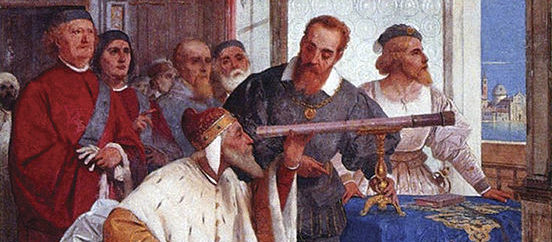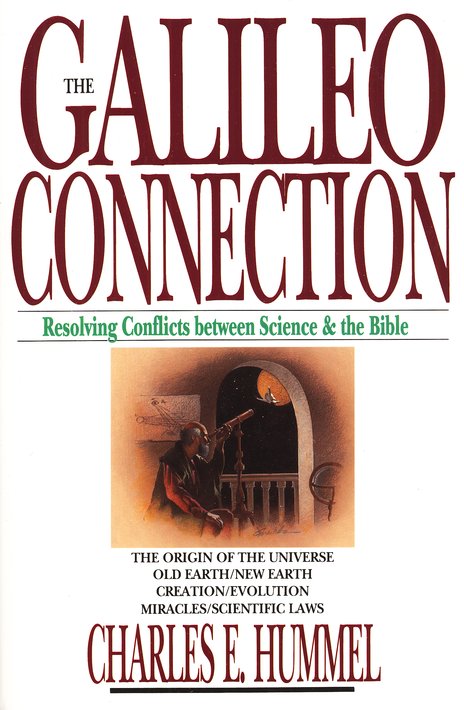

“Knowing is not merely a function of the mind focusing on ideas; it is a function of the whole person encountering the totality of human experience.”
In Charles Hummel’s The Galileo Connection, the author carefully wades through the intertwined histories of science and religion in order to make a case that the two do not conflict in the ways that public perception commonly indicates. At times it can be dry with all of its dates and descriptions of unfinished works, but the author’s thorough research culminates in a fairly convincing argument that science is “merely” the study of the how, while theology and philosophy consider the why. Hummel does a decent job of cutting down some strawman arguments from both sides, and as a former engineer turned campus minister, he is knowledgeable and fair to both fields of study. Indeed, the main thrust of his book is that within the minds of many of the greatest scientists there existed no conflict between their research and their religion, and that the issues that continue to dominate are due to overstepping by theologians and unwitting adherents of scientism.
The confrontation between Galileo and the Roman Catholic Church, which resulted in Galileo walking back his views regarding a heliocentric model of the solar system, is frequently used as some kind of conclusive proof that there is an ongoing war between scientific advancement and Christianity or that the scientific enterprise emerged only after some long struggle against the crushing authority of the church. The author addresses the episode, eventually, but begins by detailing the emergence of scientific research and how we have arrived at the scientific method that has become the standard today. We read of the lives of the early Greek philosophers, including Archimedes and Aristotle. Aristotle’s geocentric model was systematized by Ptolemy in the second century, and was adopted by the church. The Aristotelian view (which is based on logical reasoning from first principles rather than hypothesis, observation, and revision) was so completely accepted that when Copernicus suggested a heliocentric model, it was almost taken for granted that his model contradicted biblical teaching. The model was improved by Kepler, Galileo, and Newton, each building on the work that came before them and each encountering their own unique challenges between the church and the academy. The way the author tells it, Galileo’s support of the Copernican model was actually condemned because it challenged the prevailing scientific theories of the time, not specifically because it conflicted with common biblical interpretation (though it did conflict with church teaching of the time). The latter half of the book can get a bit sophisticated and might require some pre-existing knowledge, but by spending the first half tracing these elements of history, the book becomes very accessible to the unfamiliar reader.
A number of potential conflicts and resolutions are presented, such as refraining from interpreting the bible to match the current scientific theories (which failed when it was proven that the earth was not the center of the universe), or conflating a mechanism with a complete explanation for a phenomenon.1 There is a particularly good section on the presuppositions of scientists that would otherwise claim to put their faith in science; these presuppositions allow them to carry out their research, but they are philosophical viewpoints that cannot be arrived at by scientific experiment.
There is a section on miracles (that I should probably reread) that tries to argue that miracles, considered as non-repeating historical events, are by their definition outside the realm of science. Scientific research needs data and samples and repeatability. Because miracles are single occurrences that bend the laws of nature,2 scientific analysis of them is not possible. And, as the author already explained, if a mechanism by which a miracle occurred was discovered this does not mean that the cause of the event can be explained away.
The author then moves onto biblical interpretation, detailing different methods that have been used throughout the centuries. He defeats the amateur arguments that the bible teaches faulty science (“the sun rises,” “the corners of the earth,” etc.) by focusing on the intended audience of the scriptures. It was never the goal of the bible to teach scientific truth and so we should not look to it for that. The “incorrect” language are figures of speech that prevail today and their use is not questioned because their meanings are understood. He does an in depth analysis of the first few chapters of Genesis (the creation narrative) which highlights many of the issues with the various approaches to biblical interpretation for aims other than religious and moral truth. This section also considers the big bang theory. Essentially, scientists cannot replicate the initial conditions of the universe, but if they could, the biblical teaching and predominant Christian belief would remain that an uncreated creator set up those initial conditions (and the theory was initially proposed by a Catholic priest anyway).
The topic of evolution is considered near the end. There were controversies with “young earthers” trying to portray their literal interpretation of the Genesis account as a science so that it could be taught in schools. But considering the previous chapters, the issue of evolution is a comparatively small one and is treated as such.
If you are convinced by the author’s argumentation, you will see that biblical teachings and scientific discovery are not competing schools of thought but rather complementary views of a single created reality. It doesn’t quite work as an apologetic for the Christian faith, but I think it does a wonderful job of cutting down some of the cheap arguments that many use to dismiss Christianity as being “anti-science.” Along with philosophically proving the existence of God and the problem of evil, this false history of animosity between science and Christianity is one of the largest hurdles that I have witnessed amongst my peers who may otherwise be open to Christianity. Although it was written nearly half a century ago now, and so does not touch some of the more recent points of contention, it remains a crucial look at the issue at hand.
1. For example, even if we understood the exact initial conditions of the universe, had discovered by what mechanism life evolved, and could explain all of the chemical reactions within the human brain, we would still be left without an explanation of their cause.
2. Note that the laws of nature are “unknown” to us, i.e. our perception of them is only based on our observations and the presupposition that the universe is uniform, predictable, and ultimately intelligible.